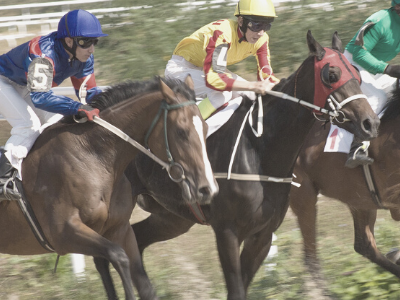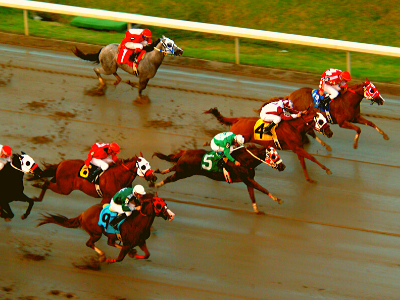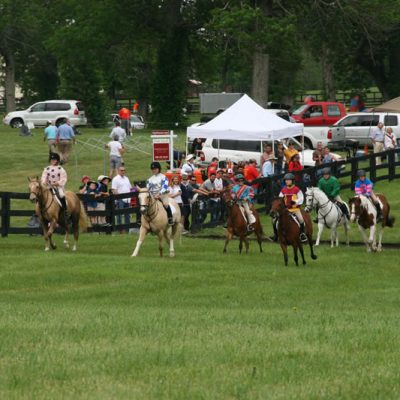Steeplechase: A race for thoroughbred horses over jumps. Steeplechase racing is the same as ‘flat’ racing in most respects, except the inclusion of fences to jump over.
Steeplechase Horse: As in other types of professional races, all steeplechasers are thoroughbreds, and most are experienced in flat racing before being converted to steeplechasing, where the necessary talents include jumping ability in addition to speed.
Steeplechase Jockey: Professional jockeys, the human riders in horse races, are traditionally adults of smaller physical dimensions – contrary to popular belief there are no height limits on jockeys, only weight limits. Weight limits for “jump” jockeys, as they’re known colloquially, are traditionally higher than for flat jockeys (roughly 140 pounds compared to 110 pounds), though some well known jockeys, such as Jacinto Vasquez and Jean Cruguet, have ridden in both types of races.
Steeplechase Start: Steeplechase races don’t start from a gate. Instead, horses are lined up in post position order and start from a standstill or a walk.
National Steeplechase Association: The official governing body for steeplechasing in the United States, based in Fair Hill, Maryland.
Maiden: A horse that has never won a race. In steeplechasing, a horse that has won on the flat is still a steeplechase maiden, meaning even a champion on the flat would “start over” as a maiden in steeplechasing.
National Fence: A man-made fence used at most stops in the U.S. and in all major track steeplechasing, so named because the standard fence was developed by the National Steeplechase Association. Consists of a steel frame stuffed with plastic “brush” and standing 52 inches high. A foam-rubber roll, covered with green canvas, is placed on the
takeoff side. Horses jump the fence in stride, much like human hurdlers in track and field events. The jumps are brought to racetracks by truck, set up a day in advance, and can be taken down quickly to allow for turf racing.
Novice: A horse in the early stages of its steeplechase career. Novice races, restricted by the date a horse breaks his maiden over jumps (usually January 1st of that year), give horses experience over hurdles before competing with more seasoned jumpers.
Timber fence: Natural, wooden fence constructed of boards, logs or posts and rails. Timber races are held as part of many race meets.
Wings: The panels on either side of a steeplechase fence, which are designed to guide a horse to a fence.




Comments